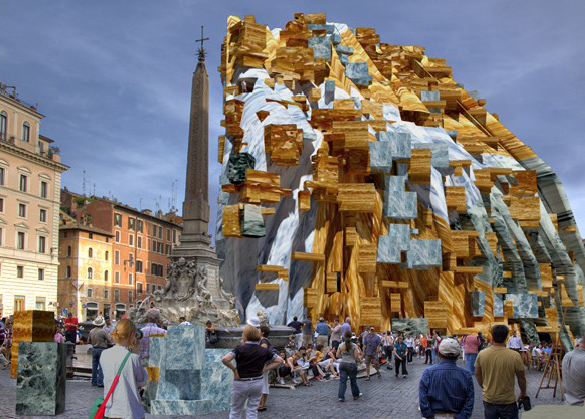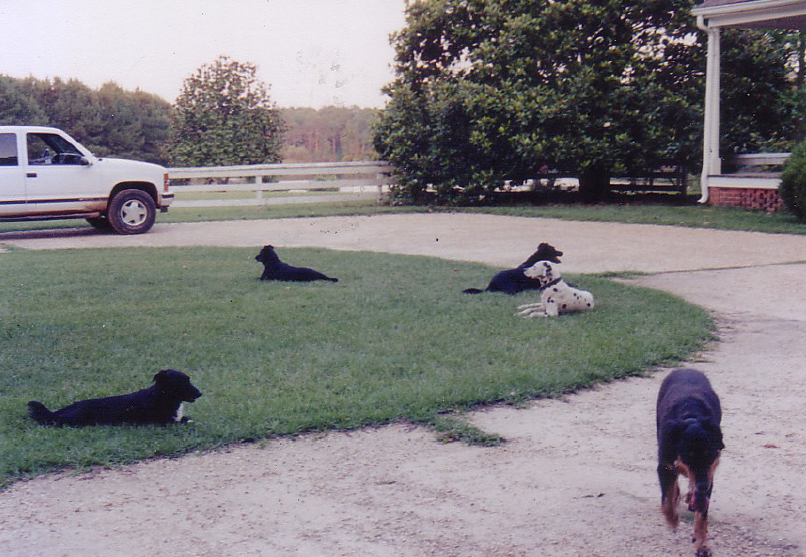Forgive me but my road to collaboration in publishing was for the most part formed in my education and practice of architecture, i consider myself really fortunate to have been in architecture school in the 90s, a much headier time still rife with Eisenman's bastardized deconstruction, Lebbeus Woods' drawing, the opening of Gehrys Bilbao, Tschumi and Libeskind both thankfully not especially busy practitioners (both should have stopped immediately after their first public buildings), etc, and in line with that architectural education, at least at the institutions i attended, was far less focused on professional practice, more on the spirit of play that develops one's expectations of what is possible in design, and in my grad education, what it actually means to be an architect (which i have ported into what it actually means to be a writer, not just want it means to write), culturally and socioethically, my mind was abuzz with possibility, then i got a summer job in an office in LA, (my first in an office after working a couple of summers with a professor living in his farm in Central Griggs building a 3 story screen porch with a house floating inside it

, an intimate alive experience, embedded with practice, in the summer of 97 i remember listening to blut aus nord and summoning for the first time on a discman in my bunk bed in the old farm workers shack, walking in the forest with the dogs
, canoeing across the lake with the dogs swimming, only their heads visible, 5 of them, yelping with their mouths half underwater, ending up in the hospital multiple times, for myself and with others, the Chinese buffet in town in Perry, all of that was architecture to me), it was a small firm, the 2 principals and me (later that summer they hired a guy (email address i shit you not, on his fucking resume, was arcboy69@yahoo.com (feel free to drop him a line)) who came to the interview in a warehouse in santa monica wearing a 3 piece suit) in a little corner of a built out warehouse in Santa Monica near my beloved 18th coffeehouse (
http://www.cafetableaux.com/18th-street-coffeehouse/) and by god were these two guys pricks, they were rude, unhappy, cynical, and very dogmatic, they did great work, but it was THEIR work and i was there to execute it precisely to their specifications, and although that is much more frequently the nature of architectural practice, it was not for me, i was nauseous at work every day (not to mention getting my black heart broken by Immortal releasing AT THE HEART OF WINTER), the following summer i spent back in Georgia on the farm and going to hellfest in Syracuse to see Starkweather, but i had kinda chosen a path there, whether i knew it or not, that i wanted to crack architecture open, and returning to LA that August i started my masters thesis which was focused on creating a new representational language for architectural representation that was primarily focused on the openness of text rather than the prescriptiveness of orthographic drawing, my first in a series of experimental exercises (in the scientific sense) was taking the text instructions from Robert Morris's BLIND TIME drawings and creating my own versions

, so basically plagiarism with a purpose, this was just to get my feet wet, secondly i took an essay by Peter eisenman about his Canneregio project in Venice and drew/built my own version by productively rereading his descriptions
, then, my final preparatory exercise was going from a finished piece of arch, not a text about arch, and creating an as-built document for the work, that could then have been utilized to create "infinite" variations on that seed, this was done for a motel room ar Arne's Royal Hawaiian (RIP)
in Baker, CA, i made 2 drawings, one was called an etymological furniture schedule and the other was a subjective spatial recipe (or something), this was an attempt at creating a language for communicating with other designers and fabricators in an open and subjective and productive manner
, finally, i used this language of representation or documentation to communicate with other thesis students to "design" elements of an installation based on baudelaire's "the double room", where one side of a wall in an old warehouse was the "sober" side
and the other was the "stoned" side
, anyway, this produced an outcome that fit some loose set of qualitative characteristics but was heterogenous in voice, not to belabor this, but i proceeded on with these thoughts in an architectural collaboration with a friend of mine under the guise of a small practice called the work.group for maybe 15 years after school, we engaged in what i would call obstructive collaboration, people might call aspects of it "photoshop tennis" in which we would share files of various sorts back and forth with the expectation of unearthing possibilities unexpected by each of us


, this is all pretty in keeping with my expectations of literature in general when one includes the reader into the equation, and without getting into the weeds with barthes and eco and such, all of my own writing has been with the goal of a reader being able to make their own work from mine, although i am very egotistical about what i am doing, my underlying agenda is quite the opposite, MASSIVE being the extreme example of this...
thus we have a natural transition point to talking about ItC and collaborative processes.......






















